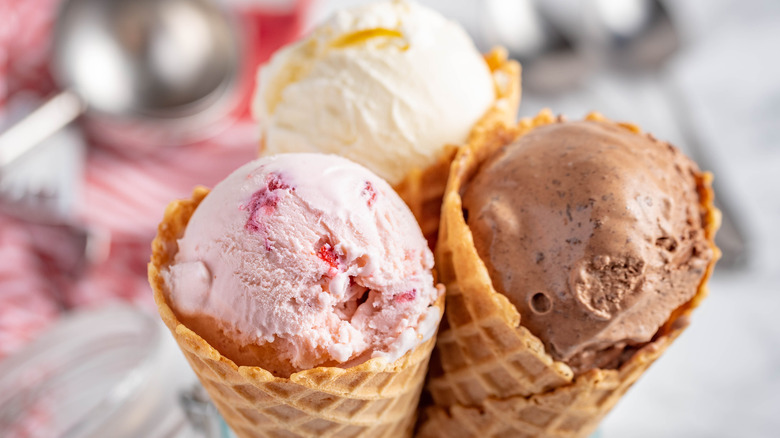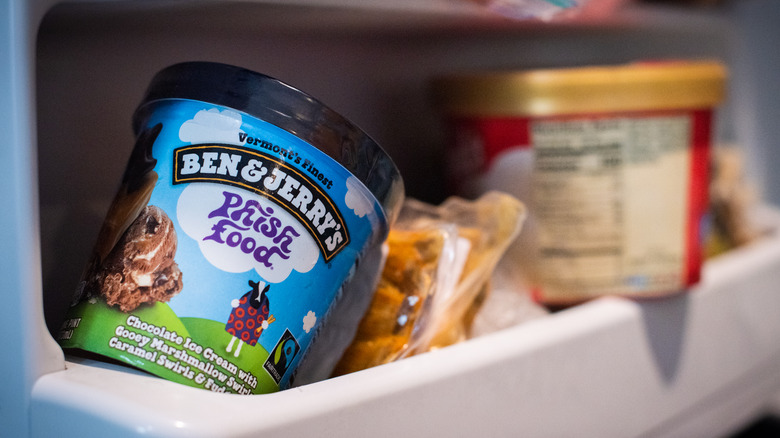The Biggest Reason Your Ice Cream Gets Freezer Burn
There are few things more disappointing than reaching for a beloved pint of ice cream, only to find its surface covered in unappetizing ice crystals. Despite being safe to consume, freezer burn has the potential to ruin the taste and texture of even the most delicious frozen desserts. Luckily, its root cause is simpler than you might imagine — and there are several tips and tricks that can help you avoid the problem in the first place.
As Cary Frye, an ice cream expert from the International Dairy Foods Association, explained to Epicurious, the most common culprit for freezer burn is improper storage. When ice cream is kept at inconsistent temperatures, it can cause the product to thaw and refreeze, resulting in the formation of ice crystals on the surface. Similarly, poor storage can lead to excessive airflow, which exposes the surface of the ice cream to oxygen. This exposure can cause moisture to evaporate, dehydrating the ice cream and leaving large ice crystals in its wake.
"If ice cream is left out and refrozen, you're going to get larger crystals, which are going to feel coarse, icy, and even colder on your tongue," explained Frye. "The second quality defect with ice cream is the evaporation of water at ice cream's surface level, and that forms additional ice crystals that you can see."
How to prevent freezer burn
Fortunately, experts have several tips for preventing freezer burn altogether. According to famed Vermont-based ice cream brand Ben & Jerry's, it's essential to keep ice cream as cold as possible — ideally at a temperature below 0 degrees Fahrenheit. Chowhound, meanwhile, recommends pressing a piece of plastic wrap or parchment paper onto the surface of the ice cream before returning its lid, thus reducing the risk of oxygen exposure.
Per Real Simple, it can also be helpful to keep ice cream in the back of one's freezer, where temperatures are typically lowest. Additionally, storing pints upside down can prevent freezer burn from spreading. According to the publication, this method causes any melty areas to drip into the lid — meaning that, when refrozen, these freezer-burn-prone sections will remain relatively separate from the rest of the pint.
While there are many ways to avoid freezer burn, its effects are not reversible. That being said, there are still ways to salvage a damaged pint. As Jeni Britton Bauer, founder of Jeni's Splendid Ice Creams, explained to The Takeout: "If you scoop down well below the textural changes, you may find a core that looks unchanged."
"Look closely at it," Britton Bauer added. "Often if it looks perfect, then it will taste good. That isn't always the case, but often is."

